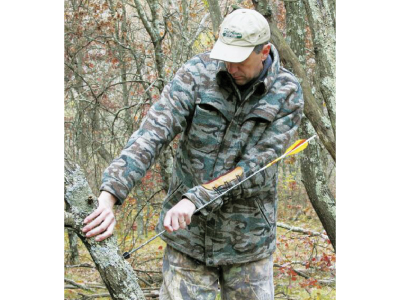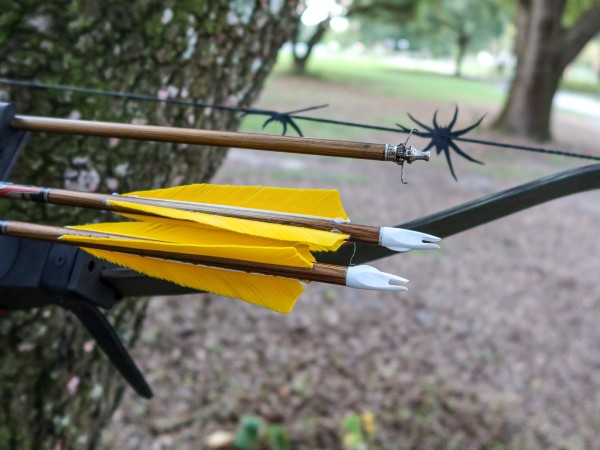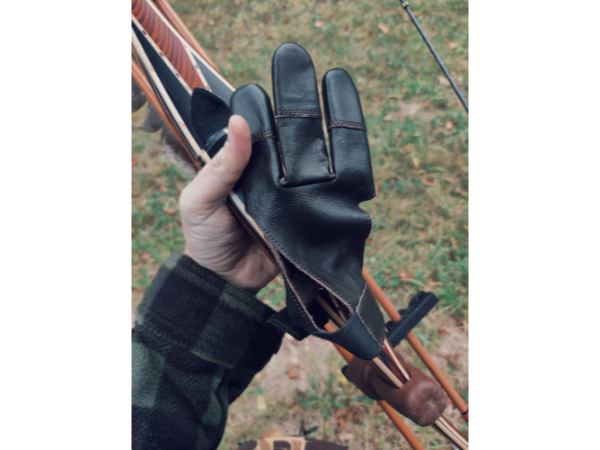A successful competitive archer I know once commented that the task of shooting a bow accurately is more mental than physical. She contended that most people can quickly learn the physical processes of shooting, but that training one’s mind to perform those functions with a high level of consistency is the true challenge. I agree, especially when I hear and read stories of bowhunters missing shots they could otherwise easily make.
All of our physical preparation won’t mean a thing if we can’t control what’s taking place in our heads when the time comes to make an accurate shot. What happens between our ears often dictates what happens between our hands. So, let’s examine some of the ways we mentally sabotage our shooting and figure out how to avoid these common mental mistakes.
Block Out Negatives
Our subconscious generally wants to make us happy. How many times have you heard someone on a 3-D course say to themselves, “Don’t shoot the tree” moments before their arrow strikes wood? The problem is their subconscious failed to understand the “don’t” part. All it heard was “shoot” and “tree.” Their mind was focused on the tree, so that’s where their arrow went.
I couldn’t begin to count how many stories of otherwise clean broadheads sticking in the ground included a hunter telling himself not to miss. The problem is that their brain responded, “You said miss? We can do that.” Arrow, meet dirt. The thoughts you least want running through your mind during the act of shooting an arrow are things you don’t want to happen. This is probably why folks I know who obsess over the possibility of making bad shots find they make plenty of them.
Stop thinking in terms of avoiding negatives and concentrate on performing positives. Replace thoughts of trying not to miss with a mental image of your fletching disappearing through the spot you intend to hit. Negative thoughts create negative results. When you only focus on creating positive results, you’ll be surprised how much more often they occur.
Confidence is Critical
Within reason, how someone feels about their equipment is often more important than any number generated by a grain scale, chronograph, or calculator. Every year I receive questions from fellow traditional bowhunters regarding equipment choices for big game. With few exceptions their equipment is up to the task, but their confidence was shaken by something misguided they read online or heard at their local archery range. My first piece of advice is usually to get their broadheads sharp, their arrows flying straight and put both where they belong. The rest takes care of itself. But if they can’t regain confidence in their equipment, it’s time for a change.
Lethality statistics mean nothing when the voice in one’s head is full of doubt. If a person believes changing equipment will make them a better hunter, they should probably do it. I’ve seen folks switch from two-blade to multi-blade heads and others take the opposite approach, each thinking their changes would lead to improved success. They’re both right.
I hunt with 56# recurves and 500-grain arrows with two-blade heads. I’ve gotten pass throughs on bull moose with my setup, but I’ve met folks utterly convinced they couldn’t use comparable equipment to shoot through a whitetail button buck. For them, my setup would be the wrong choice, but not due to anything tangible. During the shot they’d worry whether their equipment was up to the task, and uncertainty is not conducive to accuracy. When our minds are preoccupied with doubt, we’re not focusing on making our shot. In this case, perception is more important than reality.
Confidence in our abilities is just as important as confidence in our equipment. Roughly 25 years ago when our local archery clubs started using commercially made 3D targets, I grew to dislike the ones resembling turkeys. I can’t recall when my disdain for those targets began—probably with a miss—but I can distinctly remember when it ended.
I was shooting with a local pro shooter when I stepped to the stake and grumbled something unkind about the turkey target in front of me. When he asked me to explain myself, I replied that I disliked turkey targets because I couldn’t shoot them well. He told me as long as I continued to believe that, it would remain a fact. My problem wasn’t the target, but my own lack of confidence. We aim at a single spot, so why should it matter if that spot is on a target resembling a turkey or an elk? I took a moment to soak in what he said and then proceeded to hit the target in the highest scoring ring. That was the last time I let any target shake my confidence.
Poor shots tend to repeat themselves when we believe our accuracy is contingent upon the type of target we’re shooting. The same thing happens on game animals. I’ve known more than one bowhunter who made a bad shot on a particular species and then proceeded to repeat that unfortunate result time and time again, despite being able to cleanly kill other animals. As soon as we lose confidence in our ability to make an accurate shot on a particular game animal, we’ve set the stage for failure. Bad shots will eventually happen to anyone who hunts long enough. Don’t let them become your norm on account of unreasonable pessimism.
Process versus Result
Several years ago, a fellow bowhunter and I were hunting public land in Illinois when we spotted a whitetail doe 60 yards away. She was broadside watching us through a stand of mature oaks. It was late season, and the ground was covered in a thick mat of dried leaves. After a few seconds, we devised a simple strategy. My partner would walk slowly up the trail to my left, staying in sight of the deer, shuffling his feet and slowly swinging his arms. I would circle to my right, keeping a large white oak between me and the deer. If all went well, I would end up about 20 yards from her before I eased out from behind the tree for a shot.
A few minutes later, having reached my predetermined landmark, I eased around the tree. With nothing but air separating the deer from my broadhead, I picked a spot tight to her shoulder and began drawing my bow string to my cheek. Finding anchor, I couldn’t believe my good fortune. I’d heard of this two-man trick working from time to time but couldn’t believe I was about to close the deal. I could already feel a smile come over my face.
Then it happened. My arrow sailed about six inches over the doe’s back and she was gone. After a moment of head scratching, I realized the cause of my miscue. I had mentally gotten ahead of myself. I was busy patting myself on the back instead of thinking about making a proper shot. In other words, I was focusing on my desired result instead of the process at hand.
When it comes time to apply tension to your bowstring and send your arrow through whatever animal you’re hunting, block out everything not associated with what you need to do at that exact moment. You’re no longer trying to put a rug on the wall, meat in the freezer, or a shoulder mount over the fireplace. All you’re doing is one simple task: shooting an arrow. We cannot expect to achieve our desired results if we are not totally focused on the process required to create those results. Stay in the moment, and just shoot your arrow. The results will follow.
Conclusion
Controlling our mental state is ultimately about managing the pressure we put on ourselves. That pressure can assume many forms. Some of the most common are needlessly fixating on things we want to avoid, irrationally losing confidence in our equipment and ourselves, and thinking about crossing the finish line instead of making sure we don’t trip over our own two feet.
This may seem like semantics, but the proper frame of mind is important to accurate shooting, regardless of whether you’re trying to put your arrow in the center of a paper target, the 11-ring of a foam animal, or through the lungs of a real one. All the backyard practice in the world will do you little good if you can’t keep your mind right when the stakes are a bit higher than poking holes in rotten stumps and pinecones. Whether on the target line or in the hunting woods, success often hinges on shooting a single arrow where it belongs, and to do that we must first control what happens between our ears. Practice your mental game as much as your physical one and you’ll be surprised how much your shooting may improve.







Great stuff as usual Jason. Much of it I’ve heard before but can see it’s slipped to the back of my mind. And a couple of your thoughts were new ways to look at things for me. I probably need to read this article monthly!